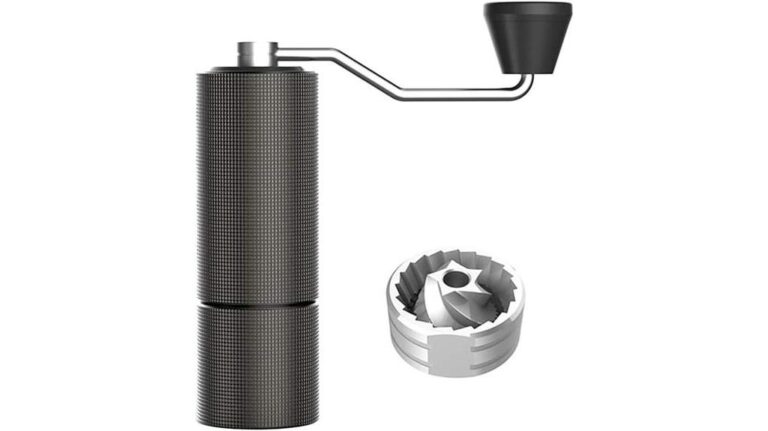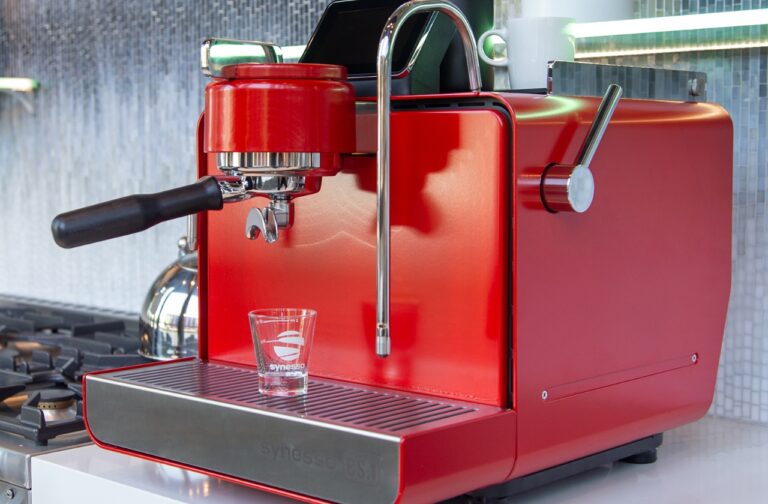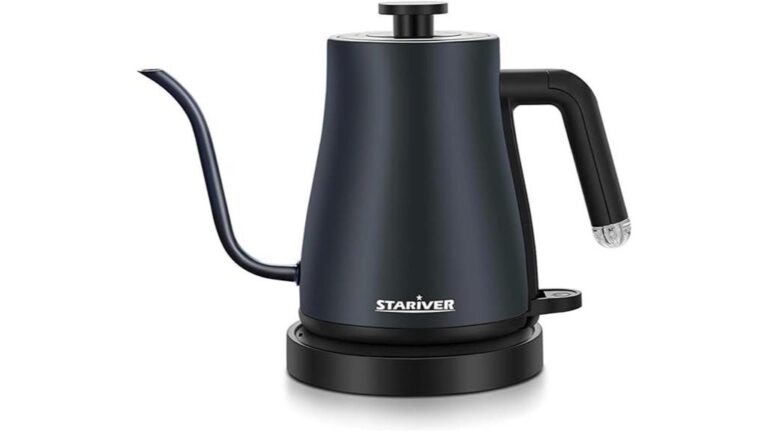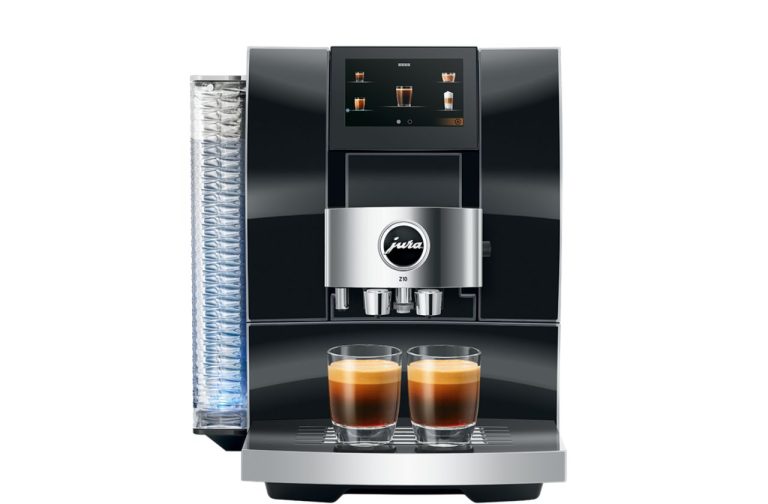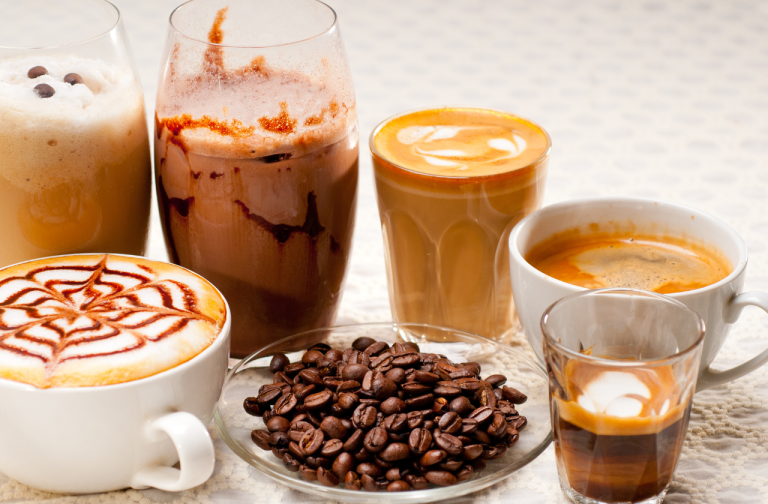10 Best Comparisons: French Press Vs. Other Brew Techniques
As passionate enthusiasts dedicated to mastering the art of coffee, embarking on the journey of coffee brewing often involves navigating through a myriad of techniques, each promising a unique and delightful cup. The landscape of coffee-making is diverse, featuring various methods that vie for attention, but in this exploration of the coffee world, the French press stands as a distinguished contender, renowned for its robust flavor extraction and simplicity.
The 10 most notable comparisons between the revered French press and other brewing techniques include:
- brewing temperature
- extraction efficiency
- flavor profiles
- body and mouthfeel
- brewing time
- cost comparison
- cleaning and maintenance
- versatility
- environmental impact
In this guide, we delve into the intricate comparisons between the French press and other prominent brewing techniques, unraveling the nuances that define each method and assisting coffee enthusiasts in finding the perfect brewing approach and enhancing their coffee brewing experience. So, join us on this journey as we navigate the intricacies of brewing techniques and empower you to make informed choices for the perfect cup of coffee.
Key Takeaways
- Brewing temperature control is crucial for unlocking the full potential of different brew methods.
- French press offers a full-bodied and rich taste, while pour-over emphasizes clarity and brightness.
- French press is a cost-effective brewing technique with minimal equipment requirements, while other methods can be more expensive.
- French press offers versatility in accommodating different brewing styles and preferences and is generally more sustainable due to the minimal use of disposable filters.
Coffee Brewing Temperature Comparison
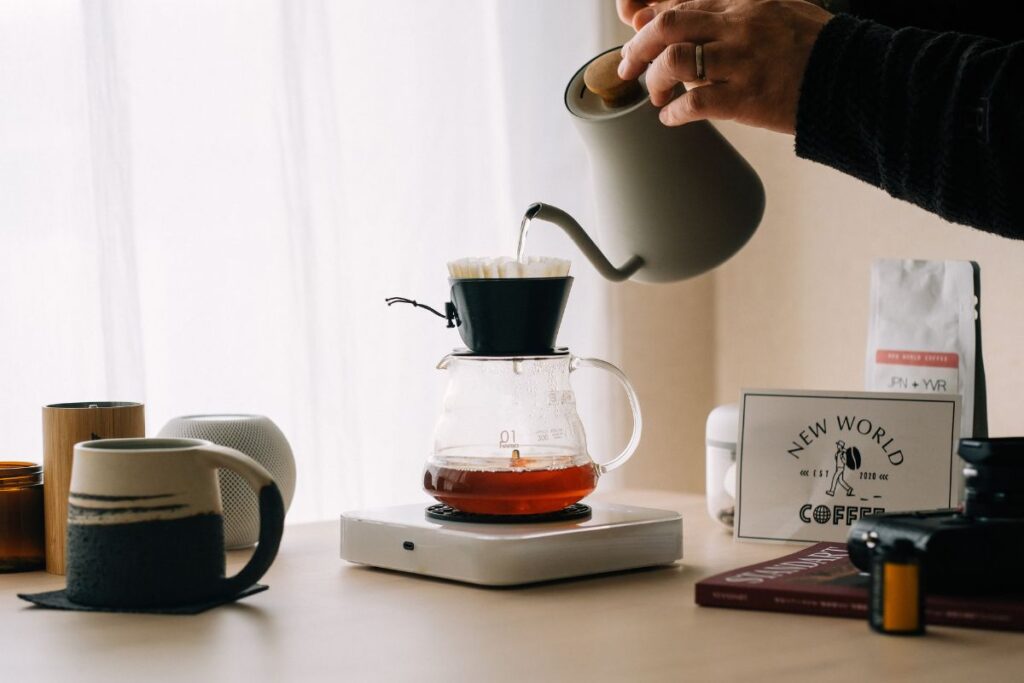
The brewing temperature comparison between French press and other brew techniques reveals distinct variations in flavor profiles and extraction levels. Brewing temperature control is a critical factor in achieving the desired flavor in coffee. French press brewing typically requires a higher brewing temperature compared to other brew techniques. This higher temperature, usually around 200°F (93°C), allows for a full extraction of the coffee grounds, resulting in a rich and bold flavor.
In contrast, other brew techniques, such as pour-over or drip brewing, often utilize lower temperatures, typically ranging from 195°F (90°C) to 205°F (96°C). This lower temperature allows for a more delicate extraction, resulting in a lighter and more nuanced flavor profile. It also helps to preserve the acidity of the coffee, producing a brighter and more vibrant cup.
The impact of brewing temperature on coffee flavor cannot be overstated. A higher temperature can lead to a more robust and intense cup, while a lower temperature can highlight the subtler flavors and nuances of the coffee beans.
As coffee enthusiasts, understanding and mastering the art of brewing temperature control is crucial in unlocking the full potential of our favorite brew methods.
Coffee Extraction Efficiency Differences
Extraction efficiency diverges significantly between French press and other brew techniques, impacting the overall flavor and strength of the resulting coffee. Understanding these differences is essential for coffee enthusiasts seeking mastery in their brewing skills.
- Extraction Consistency: French press brewing relies on immersion brewing, where coffee grounds steep in hot water for an extended period. This method allows for a more consistent extraction, as all the coffee grounds are fully saturated. In contrast, other brew techniques like pour-over or espresso involve water passing through the grounds, making it more challenging to achieve uniform extraction.
- Brew Strength Differences: Extraction efficiency directly influences the brew strength, which refers to the concentration of coffee dissolved in the final cup. French press coffee tends to have a bolder and full-bodied flavor due to the longer steeping time and higher extraction levels. Conversely, other brew methods may yield a lighter and more delicate flavor profile.
- Impact on Flavor: Extraction efficiency plays a crucial role in the overall flavor profile of the coffee. French press brewing often results in a rich and robust flavor with pronounced notes of the coffee’s origin. On the other hand, other brewing techniques may produce a cleaner and more nuanced flavor, highlighting specific tasting notes and acidity.
Flavor Profiles: French Press Vs. Other Methods
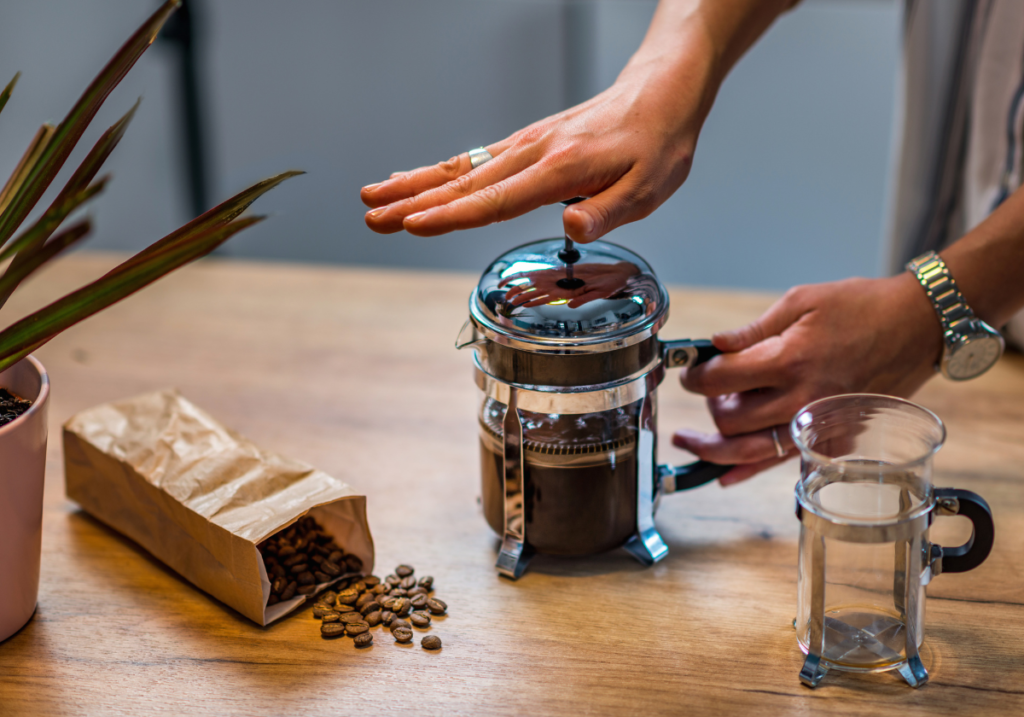
French press brewing and other brew methods yield distinct flavor profiles, with each offering a unique sensory experience. The flavor profiles of coffee are influenced by various factors, including the brewing technique differences and the flavor extraction process.
French press brewing, known for its full-bodied and rich taste, is often preferred by coffee enthusiasts who enjoy a robust and intense flavor. This brewing method allows for prolonged contact between the coffee grounds and water, resulting in a deep extraction of flavors and oils. As a result, French press coffee tends to have a heavier mouthfeel and a more pronounced bitterness.
Other brew methods, such as pour-over or espresso bring out different flavor profiles. Pour-over brewing, for example, emphasizes clarity and brightness in the flavor profile. It tends to produce a lighter-bodied cup with delicate and nuanced flavors. Espresso, with its quick extraction process, creates a concentrated and bold flavor profile, often with notes of chocolate, caramel, and fruitiness.
Whether you prefer the robustness of French press or the delicacy of pour-over, exploring the diverse flavors that coffee can offer is a journey that leads to a deeper appreciation of this beloved beverage.
Brewing Coffee: Body and Mouthfeel Variances
When brewing coffee, one crucial aspect to consider is the body and mouthfeel of the final cup. The texture differences in brewing techniques can have a significant impact on the overall taste perception.
Understanding these variances allows coffee enthusiasts to choose the brewing technique that best suits their preference for a satisfying and enjoyable coffee experience.
French press, known for its full-bodied and rich mouthfeel, offers a robust and oily texture that enhances the flavors, while other brewing methods may produce a lighter and smoother body.
Texture Differences in Brewing Coffee
Notable variations in texture are observed when comparing brew techniques, as different methods of brewing coffee yield distinct body and mouthfeel characteristics. Texture plays a crucial role in the overall drinking experience, affecting the way the coffee feels in the mouth and the perceived thickness or viscosity of the brew.
These texture variations allow coffee enthusiasts to choose the brewing method that best suits their preferences and desired body in their cup of coffee.
Here are three texture variations that have a significant impact on the body of the coffee:
- French Press: This brewing method typically produces a full-bodied coffee with a rich and heavy texture. The metal filter used in a French press allows more oils and sediment to pass through, resulting in a robust and velvety mouthfeel.
- Pour-over: Pour-over brewing, such as using a Chemex or V60, tends to produce a lighter-bodied coffee with a clean and smooth texture. The paper filter used in this method removes oils and sediment, resulting in a more delicate and crisp mouthfeel.
- Espresso: By forcing hot water through finely ground coffee under high pressure, espresso brewing produces a concentrated and intense coffee with a thick and syrupy texture. The crema that forms on top adds to the luxurious mouthfeel of the espresso shot.
Coffee Brewing Techniques: Impact on Taste Perception
The variations in texture between different brewing techniques have a significant impact on taste perception, specifically in terms of body and mouthfeel.
When using the French press method, the resulting coffee possesses a rich and full-bodied texture. The metal filter of the French press allows more oils and sediments to pass through, resulting in a robust brew with a heavier mouthfeel.
Brewing techniques that utilize paper filters, such as pour-over or drip brewing, produce a cleaner and smoother cup of coffee. The paper filter traps oils and sediments, resulting in a lighter body and a cleaner mouthfeel.
These brewing equipment differences not only affect the texture but also impact the aroma perception. The French press method, with its fuller body, tends to enhance the aroma and create a more aromatic experience for the coffee enthusiast seeking a rich and bold cup of coffee.
Brewing Time: French Press Vs Other Techniques

Brewing times between the French Press and other brewing techniques offer distinct differences.
The French Press is known for its quick brewing process, allowing users to have a cup of coffee in just a few minutes.
Other techniques, such as pour-over or espresso, require more time and attention, resulting in a slower brewing process. This variation in brewing time can impact the overall efficiency and convenience of the brewing method chosen.
Whether you prefer a quick and bold brew or a slow and intricate extraction, understanding the impact of brewing time on taste perception is crucial in mastering the art of coffee brewing.
Quick Vs. Slow Brewing
For those seeking a quicker brewing method, the French press offers a notable contrast to other techniques. While some brewing methods require patience and a longer brewing time to achieve optimal flavor, the French press offers a quick and efficient way to enjoy a rich and robust cup of coffee.
Here are three key points to consider when comparing quick vs. slow brewing and their impact on taste perception:
- Extraction: Quick brewing methods, like the French press, may result in a bolder and stronger flavor profile. The shorter contact time between water and coffee grounds can extract more oils and flavors, leading to a fuller-bodied cup.
- Clarity: Slow brewing methods, such as pour-over or siphon, often prioritize clarity and cleanliness in the cup. These techniques allow for better control over-extraction, resulting in a cleaner and more nuanced taste experience.
- Complexity: Slow brewing methods can showcase the intricate nuances of different coffee beans. The extended brewing time allows for a more delicate and refined extraction, highlighting the unique flavor notes and characteristics of the coffee.
Time Efficiency Comparison
In comparing the time efficiency of brewing techniques, the French press stands out in its ability to deliver a quick and satisfying cup of coffee. Unlike other methods that require precise temperature control and longer brewing times, the French press allows for a quicker extraction process. With its simple design and straightforward brewing process, coffee lovers can enjoy a delicious cup of coffee in just a matter of minutes.
It is important to note that taste preference plays a significant role in choosing the right brewing technique. While some may value the convenience and speed of the French press, others may prioritize the nuanced flavors and complexity achieved through slower brewing methods such as pour-over or espresso.
Ultimately, the decision between quick brewing techniques like the French press and slower methods is a personal one, dependent on individual taste preferences and desired coffee experience.
Ease of Use and Convenience
One aspect to consider when comparing the French press to other brew techniques is the consistently user-friendly and convenient nature of the French press.
Here are three reasons why the French press stands out in terms of ease of use and convenience:
- Simplicity: Unlike other brewing techniques that require complex equipment or precise measurements, the French press is refreshingly simple. All you need is coarsely ground coffee, hot water, and a French press. It’s a straightforward process that allows you to quickly and easily brew a delicious cup of coffee without any hassle.
- Versatility: The French press offers versatility in terms of brewing options. You have control over the strength and flavor of your coffee by adjusting the brewing time and water temperature. Whether you prefer a bold and strong cup or a milder one, the French press allows you to customize your brew to suit your taste preferences.
- Portability: The French press is also highly portable, making it a convenient choice for coffee lovers on the go. Its compact size and durable design make it easy to bring along on camping trips, vacations, or even to the office. With a French press, you can enjoy a fresh cup of coffee wherever you are without the need for electricity or complicated brewing techniques.
Cost Comparison: French Press Vs. Other Brewing Methods

Comparing the cost of the French press to other brewing methods, it is important to consider the financial implications of each option. The French press is a simple and affordable brewing method that requires only hot water and coarsely ground coffee. Compared to other brewing methods, such as espresso machines or pour-over systems, the French press is significantly more cost-effective.
Espresso machines can be quite expensive, ranging from a few hundred dollars to several thousand, depending on the brand and features. Additionally, the maintenance and replacement costs of parts can add up over time.
Pour-over systems, while more affordable than espresso machines, still require special equipment, such as a gooseneck kettle and a dripper, which can also increase the overall cost.
The French press is also a winner with ongoing brewing costs. With the French press, there are no additional filters or capsules to purchase regularly. Once you have the initial equipment, the only ongoing cost is the coffee beans themselves. This makes it a more budget-friendly option for those who enjoy brewing their own coffee at home.
It is important to note that cost should not be the only factor to consider when choosing a brewing method. Taste preference is crucial. While the French press is known for producing a bold and full-bodied coffee, it may not be to everyone’s liking. Other brewing methods, such as pour-over or espresso, offer different flavor profiles and strengths.
When considering the cost comparison of the French press and other brewing methods, it is essential to weigh the financial implications alongside one’s taste preferences. By doing so, coffee enthusiasts can find the perfect brewing method that satisfies both their palate and their wallet.
Cleaning and Maintenance Differences
To ensure optimal performance and longevity, it is crucial to understand the cleaning and maintenance differences between the French press and other brewing techniques. Proper cleaning techniques and regular maintenance are essential for preserving the quality of your coffee and the lifespan of your brewing equipment.
Here are three key differences to keep in mind:
- Disassembly and Cleaning: Unlike other brewing methods that require disassembling various parts for cleaning, the French press is relatively simple to clean. After each use, you can easily separate the plunger assembly from the glass or stainless steel container and rinse them separately. It is important to thoroughly clean all parts to remove coffee residue and oils that can affect the taste of future brews.
- Filter Replacement: While some brewing techniques rely on disposable paper filters that need to be replaced after each use, the French press utilizes a permanent metal filter. This means that you don’t need to worry about constantly buying and replacing filters. It is essential to regularly clean the metal filter to prevent clogs and ensure proper extraction.
- Maintenance Tips: Apart from regular cleaning, there are a few maintenance tips specific to the French press. Firstly, avoid using harsh detergents or scrub brushes that can damage the glass or stainless steel. Instead, opt for gentle cleaning agents and soft brushes. Secondly, periodically inspect the plunger assembly for any signs of wear and tear, such as loose or corroded parts. Lastly, store your French press in a dry place to prevent moisture buildup, which can lead to mold growth.
Versatility: French Press Vs. Other Brew Techniques

When it comes to versatility, French press, and other brew techniques offer different brewing methods and unique flavor profiles.
The French press allows for full immersion brewing, resulting in a rich and robust cup of coffee with a full-bodied flavor.
Other brew techniques, such as pour-over or espresso, offer different brewing processes and extraction methods, leading to distinct flavor characteristics and nuances.
The versatility of these brew techniques allows coffee enthusiasts to explore and enjoy a wide range of flavors and brewing experiences.
Different Coffee Brewing Methods
One major aspect to consider when comparing the French Press to other brew techniques is the versatility of different brewing methods. While the French Press is widely known for its simplicity and ease of use, other brewing equipment offers unique ways to extract the flavors from coffee beans.
These different brewing methods offer coffee lovers the opportunity to explore various flavors and profiles, showcasing the versatility of the coffee extraction process.
Here are three examples:
- Pour-over: This method involves pouring hot water over coffee grounds held in a filter. It allows for precise control over the brewing process, resulting in a clean and bright cup of coffee.
- Aeropress: The Aeropress combines immersion and pressure to extract the flavors. It offers versatility in terms of brew time and grind size, allowing coffee enthusiasts to experiment and achieve different flavor profiles.
- Espresso: While traditionally associated with espresso machines, espresso can also be brewed using manual tools like the Moka pot. This method extracts coffee under high pressure, resulting in a concentrated and intense brew.
Unique Coffee Flavor Profiles
The versatility of different brew techniques allows for the creation of unique flavor profiles, showcasing the distinct characteristics of each method. The choice of brewing equipment and technique can greatly influence the flavors that are extracted from the beans.
French press, with its immersion brewing method, tends to produce a full-bodied and robust cup of coffee. The metal filter used in a French press allows more of the coffee oils and sediments to pass through, resulting in a stronger and richer flavor.
Other brew techniques like pour-over or espresso focus on a cleaner and more nuanced extraction, highlighting the subtle flavors and aromas of the coffee. These methods often produce a brighter and more delicate cup with a cleaner finish.
Weird Coffee Tip: What are the best coffee beans to use in a French Press? Does it really matter which beans you use? To find out the answer, read this article:
Best Coffee For French Press
Environmental Impact: French Press Vs Other Brewing Methods
To evaluate the environmental impact of French press compared to other brewing methods, a comprehensive analysis is essential. When considering the carbon footprint and waste production, it becomes evident that the French press has certain advantages over other methods:
- Minimal Energy Consumption: Unlike espresso machines or pod systems that require electricity to brew coffee, the French press relies solely on hot water and manual pressure. This significantly reduces energy consumption, resulting in a lower carbon footprint.
- Reduced Waste: One of the main advantages of the French press is its reusable metal or mesh filter. Unlike paper filters used in drip coffee makers, which are discarded after each use, the French press filter can be used repeatedly, reducing waste production. The lack of single-use pods or capsules further minimizes environmental impact.
- Compostable Grounds: After brewing with a French press, the coffee grounds can be easily composted, providing a valuable source of nutrients for plants. This eliminates the need for disposal and contributes to sustainable practices in waste management.
Conclusion
The French press offers a unique brewing experience compared to other techniques. It provides a full-bodied and flavorful cup of coffee with a distinct mouthfeel.
While it may require more time and effort for cleaning and maintenance, the French press is versatile and allows for experimentation with different brewing variables. It is also a cost-effective and environmentally friendly brewing method.
Ultimately, the choice between the French press and other techniques depends on personal preferences and priorities.

